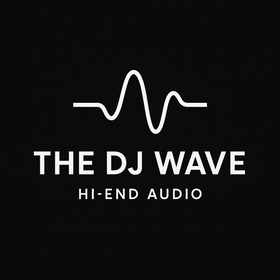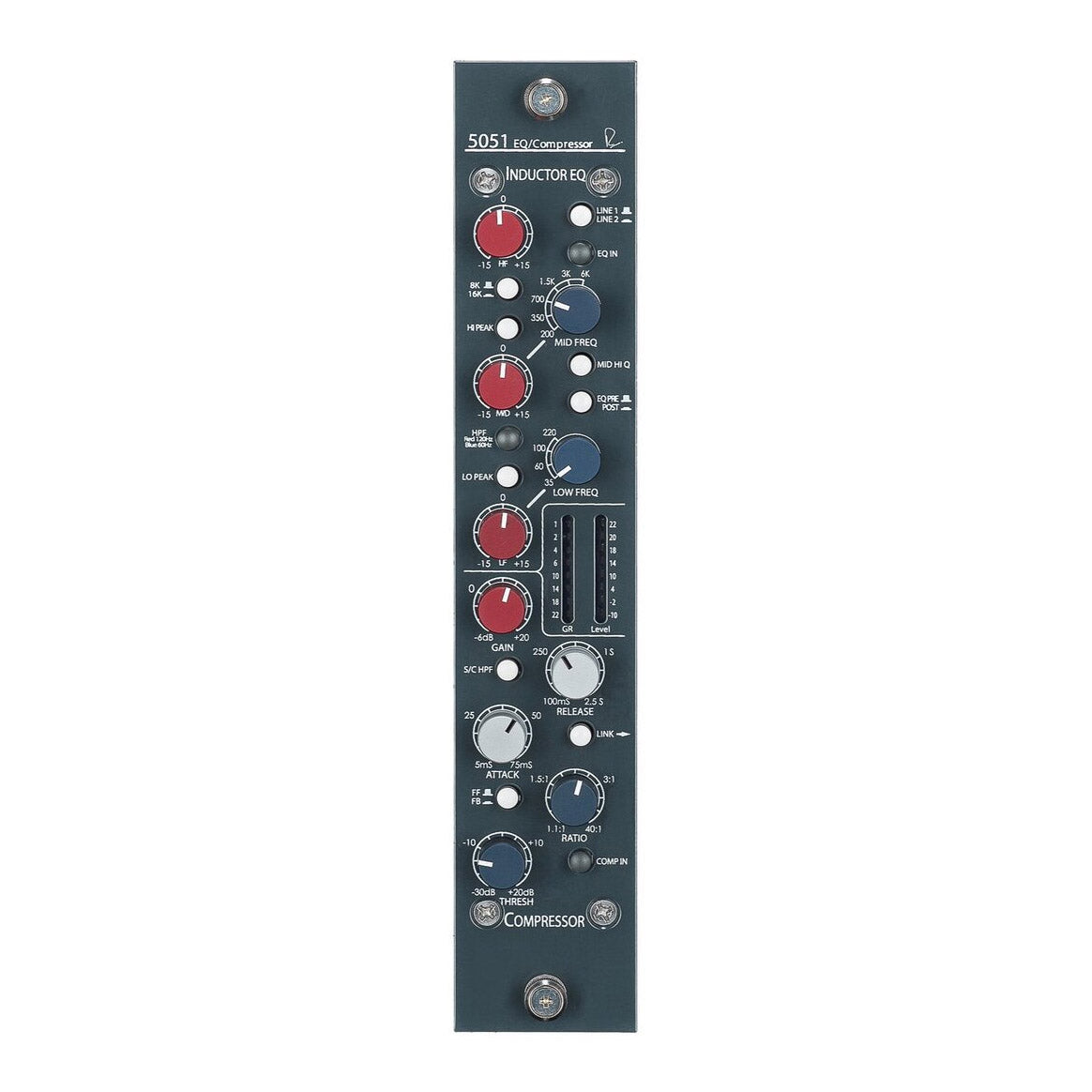The Rupert Neve 5051 Shelford Inductor EQ/Compressor merges a three-band inductor EQ based on classic Rupert Neve designs with the precision and flexibility of the Portico II VCA compressor. Crafted with fully-discrete Class-A circuitry, custom audio transformers, and inductors, the 5051 delivers legendary warmth, punch, and musicality expected from Rupert Neve professional audio equipment. Ideal for studio and live applications, the 5051 provides precise tonal shaping and dynamic control in one versatile unit.
Key Features
-
High-Frequency EQ – Shelf/peak selectable at 8 kHz or 16 kHz with continuous gain adjustment from -15 dB to +15 dB.
-
Mid Parametric EQ – Selectable center frequencies at 200, 350, 700, 1.5k, 3k, and 6kHz with ±15 dB gain and adjustable Hi Q.
-
Low-Frequency EQ – Selectable at 30, 60, 100, and 220 Hz with continuous gain from -15 to +15 dB; choose between peak or shelf curves.
-
EQ Pre/Post Switch – Moves EQ before or after the compressor for flexible tonal shaping.
-
High-Pass Filter (HPF) – Cycle between bypassed, 60 Hz, or 120 Hz.
-
Compressor Ratio Control – Adjust the amount of gain reduction applied above the threshold.
-
Side-Chain HPF – Applies a 250 Hz high-pass filter to the compressor side-chain for cleaner low-end dynamics.
-
Release Time – Controls the return speed of gain after compression.
-
Feed-Forward / Feedback Mode (FF/FB) – Switch between feed-forward and feedback VCA detection for tonal versatility.
-
Linked Operation – Connects with a second 5051 module for stereo processing.
-
8-Segment LED Meters – Monitor gain reduction and output level in real-time.
-
Post-Compressor Make-Up Gain – Compensates for level changes after compression.
-
Line Select – Route between mic and line inputs with ease.
Professional Studio and Live Solution
The 5051 combines vintage-inspired EQ with state-of-the-art compressor design to offer a musical, versatile, and high-fidelity solution for recording, mixing, and mastering. Its discrete class-A design ensures transparent, rich audio reproduction while providing flexible tonal shaping and dynamic control.
Line Input
-
Frequency Response (Main Output, no load):
-
-3 dB @ 2.5 Hz
-
-3 dB @ 125 kHz
-
Noise (Main Output, unweighted, 22 Hz – 22 kHz, terminated 40 Ω):
-
With gain at unity: better than -102 dBu
-
Max Input Level (20 Hz – 20 kHz): +25 dBu
-
THD + Noise (from <10 Hz to 80 kHz):
-
@ 1 kHz, +20 dBu output: <0.002%
-
@ 20 Hz, +20 dBu output: <0.120%
-
@ 20 kHz, +20 dBu output: <0.010%
Equalizer
-
Noise (Main Output, unweighted, 22 Hz – 22 kHz, terminated 40 Ω, gains at 0): < -92 dBu
-
Max Input (20 Hz – 20 kHz): +24.5 dBu
-
Max Output (20 Hz – 20 kHz): +24.5 dBu
-
THD + Noise (from <10 Hz to 80 kHz):
-
@ 1 kHz, +20 dBu output: <0.007%
-
@ 20 Hz, +20 dBu output: <0.120%
-
@ 20 kHz, +20 dBu output: <0.070%
Compressor
-
Noise (Main Output, unweighted, 22 Hz – 22 kHz, terminated 40 Ω): < -92 dBu
-
Max Input (20 Hz – 20 kHz): +25 dBu
-
Max Output (20 Hz – 20 kHz): +25 dBu
-
THD + Noise (from <10 Hz to 80 kHz, Threshold +20 dB, Ratio 1.1:1, Gain 0):
-
@ 1 kHz: <0.020%
-
@ 20 Hz: <0.140%
-
@ 20 kHz: <0.070%
-
Controls:
-
Threshold: continuously variable -30 dBu to +20 dBu
-
Ratio: continuously variable 1.1:1 to 40:1
-
Gain: continuously variable -6 dB to +20 dB
-
Attack: continuously variable 20 ms to 75 ms
-
Release: continuously variable 100 ms to 2.5 s
Physical Dimensions

